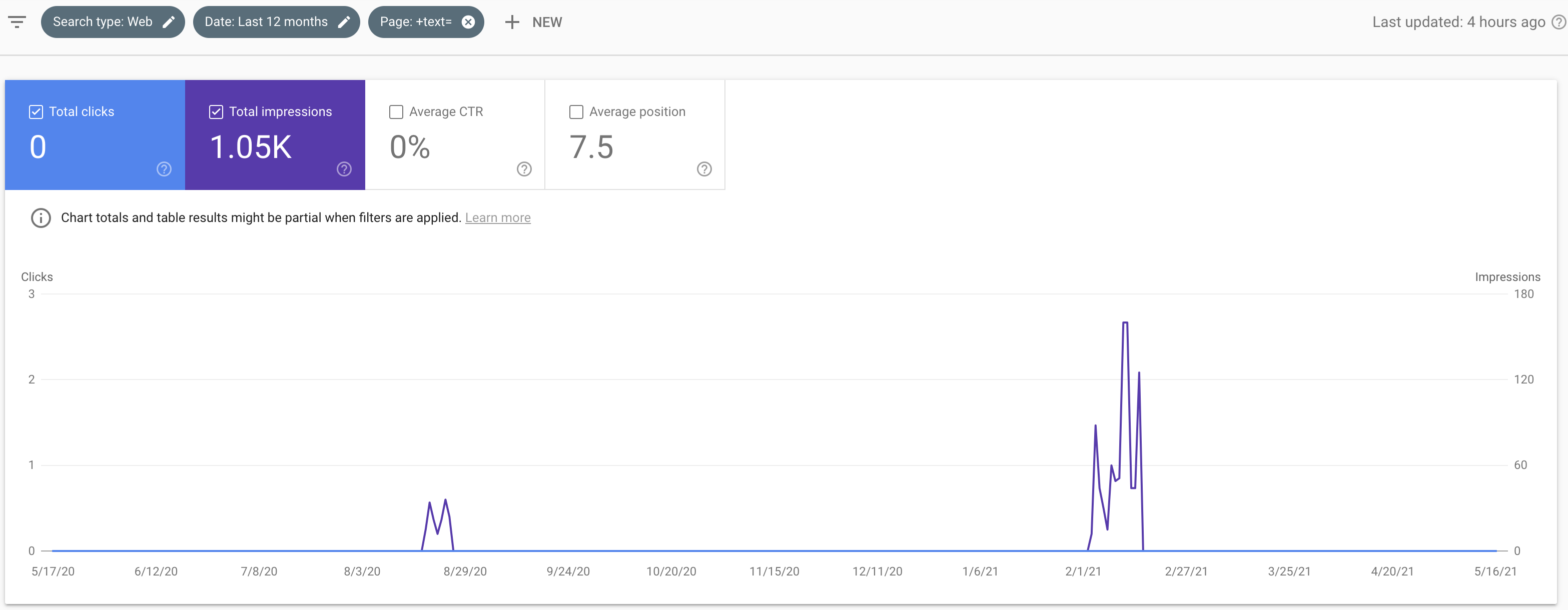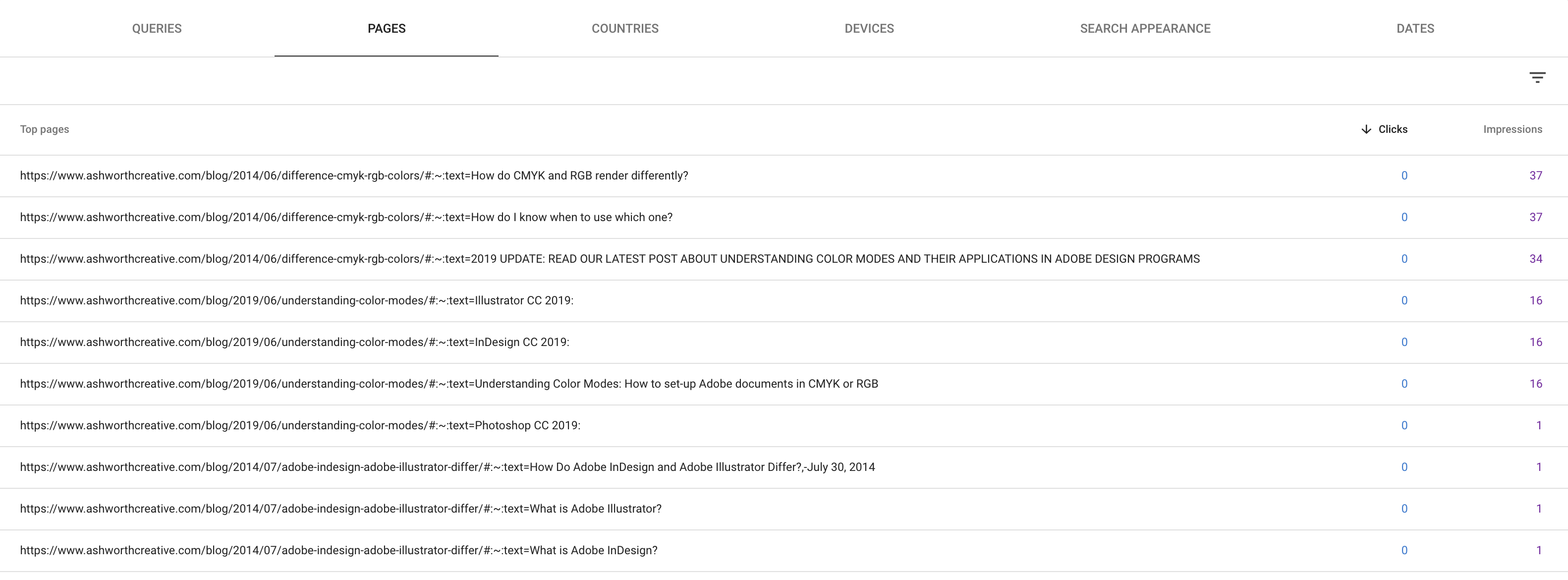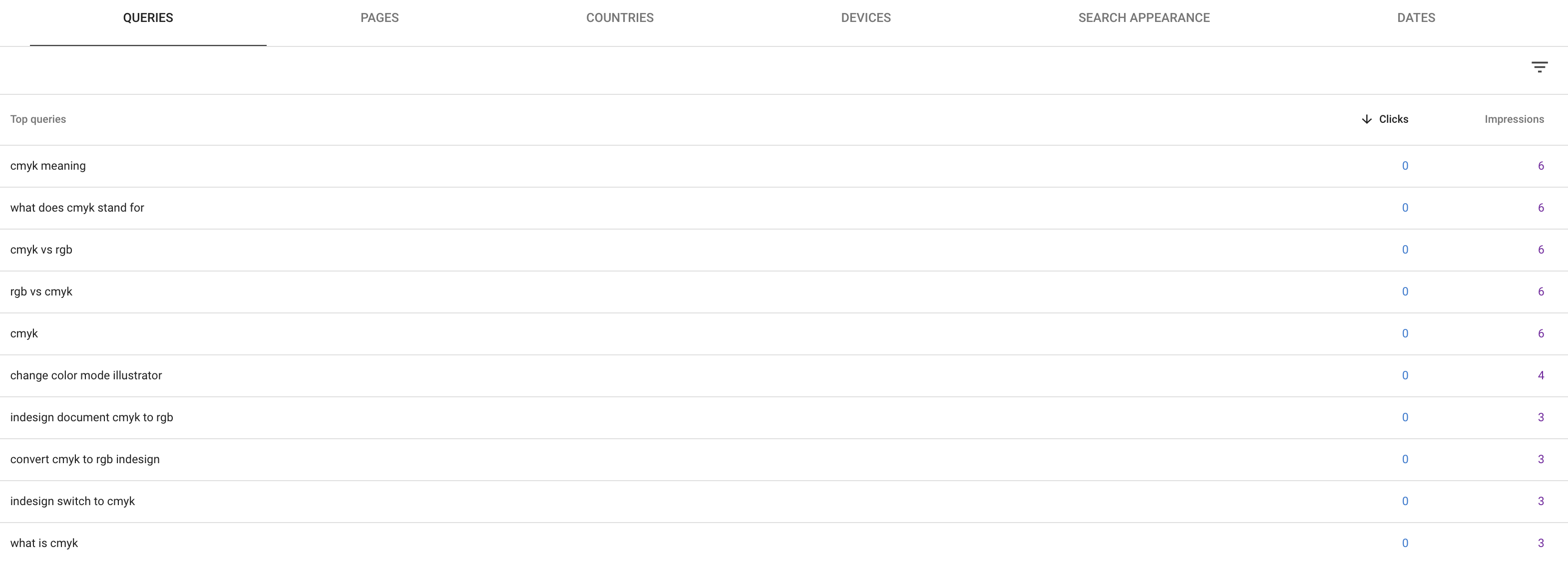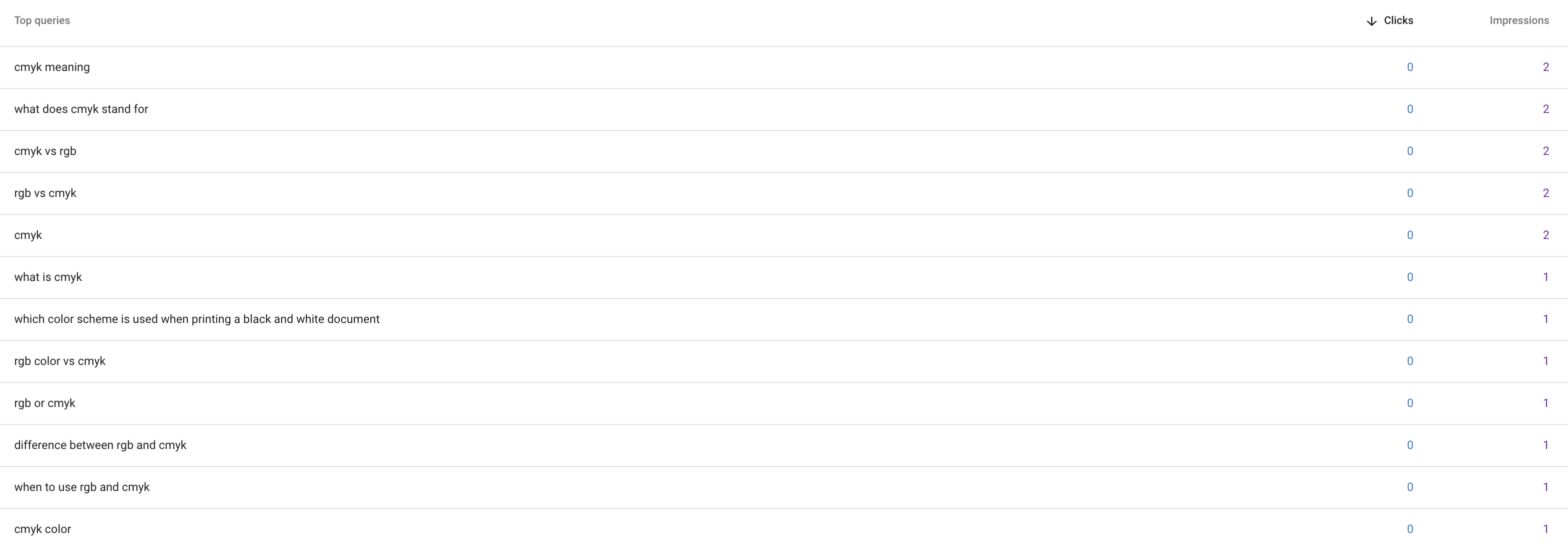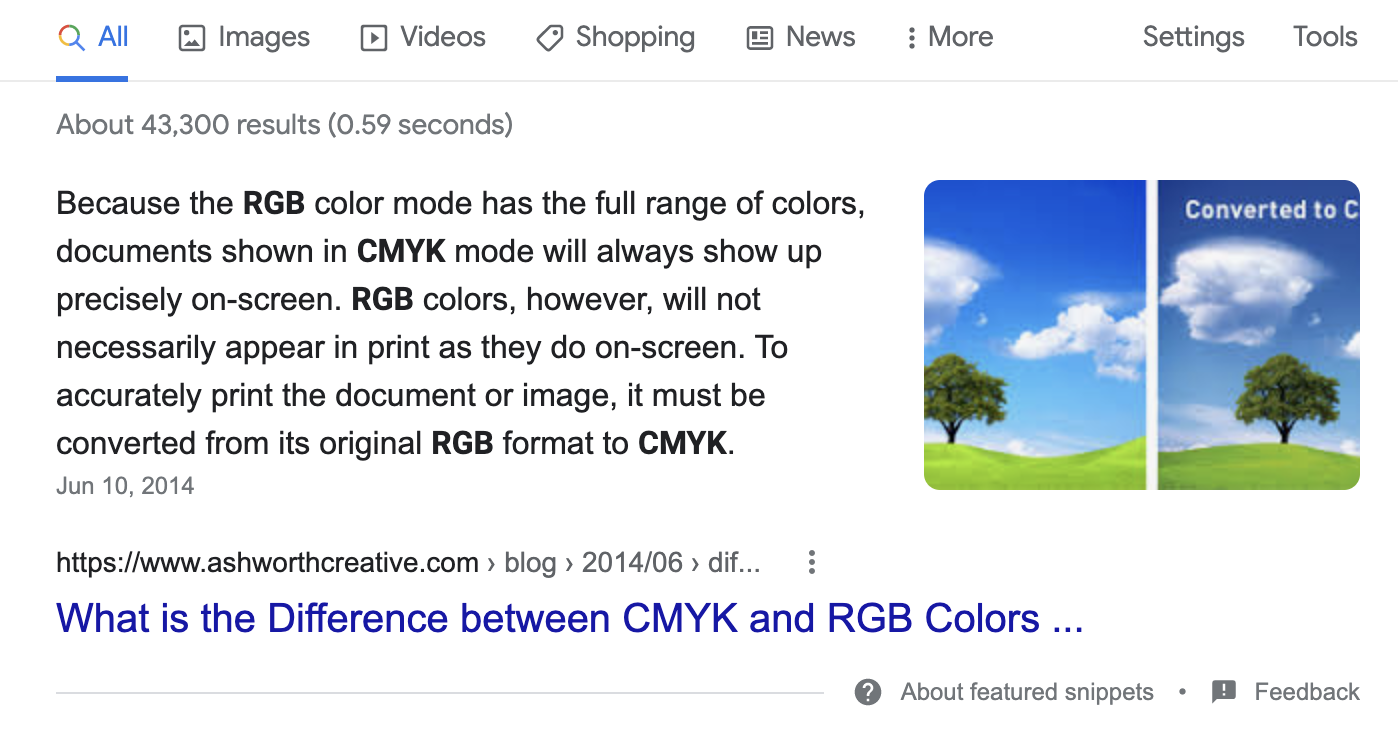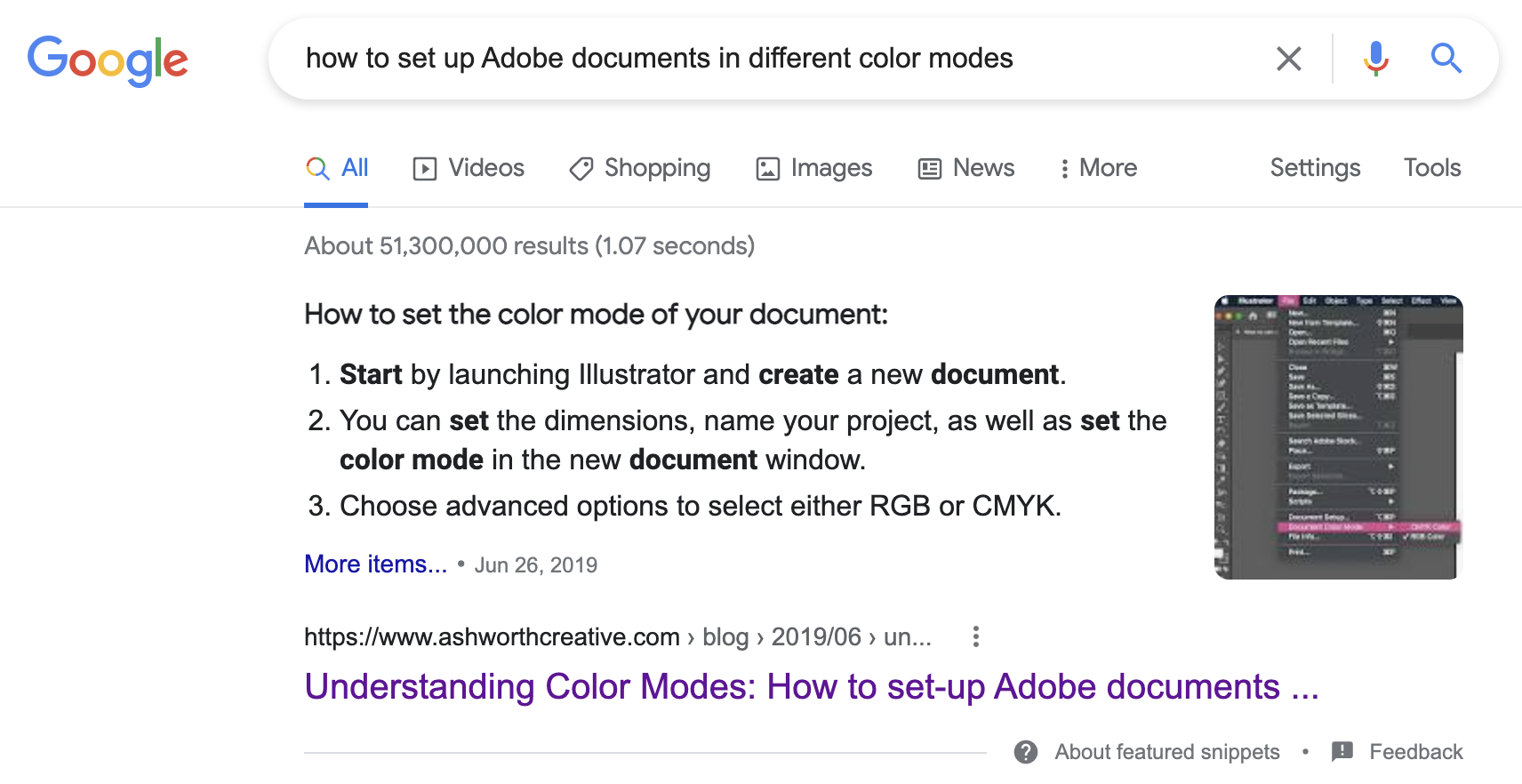Google Featured Snippets are and opportunity to increase organic CTR. Appearing before all other search results, featured snippets get approximately 8% of all clicks for a search results.
To check if any pages on your website may have been in a Google featured snippet, go to your Google Search Console, check ‘performance by pages,’ choose your date range and add a new page filter for URLs containing “text=”. Using this filter isn’t a definitive way to check for featured snippets, but it’s the closest free solution to narrowing down which pages on your site Google may have been pulling snippets from.
Let’s look at an example from our own website: In 2019, we wrote a blog post about how to set up Adobe documents in different color modes. The post is clearly written and has images to guide readers through the document setup process. It is written in a way that Google seems to like, enough so that it was (and still is) being pulled as a featured snippet for some popular keywords. Another similar blog post from 2014 was also possibly being used as a featured snippet at the same time, which makes sense because the newer post was created to link from the older, more popular post. We can see when ‘text=’ was added to the URL, what search terms were used to create the snippet, and what the URL looks like for a snippet compared to the page’s usual URL from Google by just using Google Search Console.
The first step is to open up your performance report in the same way mentioned above – note this will only show results if your site had any matches for the filter criteria of URLs including ‘text=’.
Since there is no way to see when or for how long a page may have been used as a featured snippet, using the date filter of the past twelve months helps us see which dates URLs with that parameter had the most impressions and were likely being used for featured snippets.
We’ll dive deeper into February 12, 2021 since that was the most recent date some of our pages with the URL parameter got the most impressions. Changing the date filter to ‘Custom’ for that date, Search Console will only show pages and query results for that day. The image below shows the 10 pages that included ‘text=’ in the URL in order of impressions.
And these are 10 of the 25 queries that resulted those pages in search:
Clicking on the page with the most impressions, the first page on the list, shows which queries were used to result in that specific page.
You can see these queries were used to find a definition, to compare, and how to do a specific process. The combination of the formatting of the article using common questions about the topic, the informative images, and use of examples and keyword research is why Google was likely pulling our article as a featured snippet.
Have we broken the Google code?
To test if a phrase or keyword is pulling a featured snippet, we put in a query that we thought would result in a snippet from one of our most popular posts. Sure enough, the query resulted in a featured snippet in an ordered list format. It’s important to note that Google also does deduplication which removes a page from the search results of a query if that page is being used as the featured snippet. That means if your page is a featured snippet, like ours shown below, your page won’t show again below the featured snippet.
See our previous post in our Featured Snippet SEO series here. Contact us to learn more about Ashworth Creative’s SEO services.

